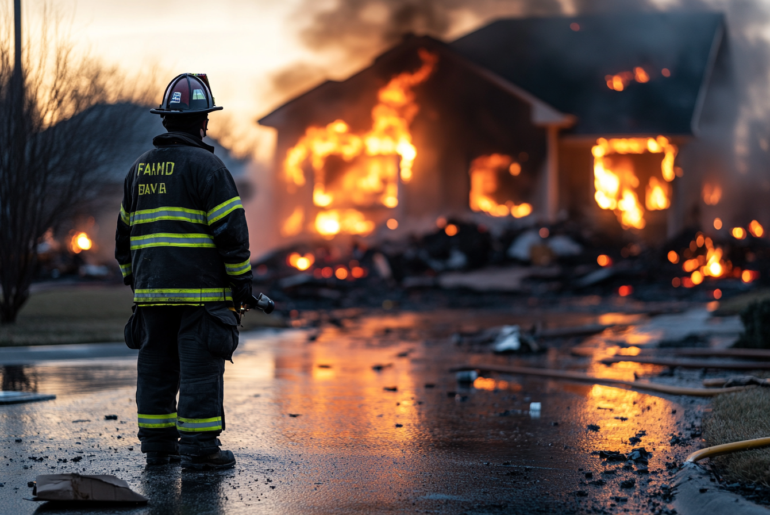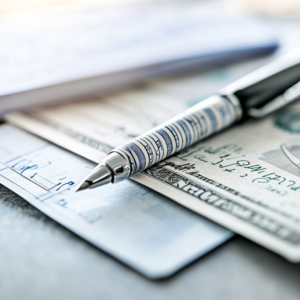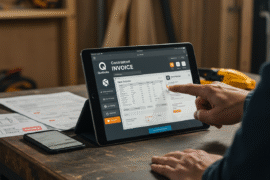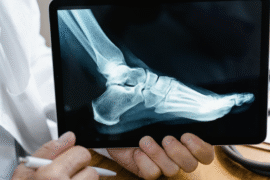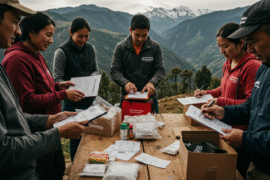This article may contain references to products or services from one or more of our advertisers or partners. We may receive compensation when you click on links to those products or services. Nonetheless, our opinions are our own.
The information presented in this article is accurate to the best of our knowledge at the time of publication. However, information is subject to change, and no guarantees are made about the continued accuracy or completeness of this content after its publication date.
It can be hard to know what to do next when disasters like hurricanes, floods, or wildfires happen. A major event can make you feel lost and stressed. The Federal Emergency Management Agency, or FEMA, is in charge of this. It’s important to know what FEMA is and what it does. You can use this information to get through these hard times.
We’ll talk about how FEMA works, what help you can get, and how to get ready for anything. When you know what to expect and how to get to these important services, you can feel safe when it matters most.
- Highlights
- FEMA’s Role in Emergency Management
- Applying for Help from FEMA
- Types of Assistance Available Through FEMA
- Getting Prepared for Disasters: How FEMA Can Help You Get Ready
- Real Stories: How FEMA Aided People
- Help Yourself: Tips and Resources for Working with FEMA
- Basic Disaster Supplies Kit
- Conclusion
- Frequently Asked Questions
- Recommended Reads
Highlights
- Learn how FEMA helps people after disasters with financial aid, housing, and preparation resources.
- Find out how to apply for FEMA assistance and track the status of your application.
- Understand the various types of FEMA support and what you need to qualify.
- Get practical tips, resources, and real stories to assist with recovery.
FEMA’s Role in Emergency Management
FEMA plays a role in the nation’s emergency response system. They step in when disasters like hurricanes, floods, or wildfires occur. Their primary responsibility is to provide support to the affected communities. They provide several important services that can be very helpful during emergencies.
- Financial Help: FEMA offers support for temporary housing, home repairs, and other disaster-related expenses. Knowing how to apply can ease your financial stress when you need it most.
- Preparedness Resources: They provide information on how to prepare for disasters. Their website includes checklists, plans, and community training to help you stay ready.
- Local Partnerships: FEMA works with state and local governments to ensure help is delivered efficiently. This local support is crucial during recovery.
FEMA also works on planning for the long term and getting back on track. They tell communities to get ready for disasters that might happen in the future. You can turn worry into confidence by joining local programs that teach you how to keep yourself and your family safe.
Applying for Help from FEMA
When you request help from FEMA, knowing the process can save time and reduce stress. Start by visiting FEMA’s website or calling their helpline to explore available support options. This might include help for your home or personal property. Be ready with details like your Social Security number, insurance information, and bank account details for direct deposits. You can apply online, by phone, or using a paper form.
Tips to Keep in Mind
- Be thorough: Provide complete and accurate information to avoid delays.
- Keep records: Save copies of all messages, submissions, and supporting documents.
- Follow up: Regularly check the status of your application to ensure progress.
| Assistance Type | Details |
|---|---|
| Temporary Housing | Funds for temporary shelter while you recover. |
| Home Repairs | Financial help to make your home safe and livable. |
| Personal Property Replacement | Assistance to recover essential items lost in the disaster. |
If FEMA denies your application, you can appeal. Act quickly and include any updated information that supports your case. The process may seem difficult, but with persistence and careful attention, you can get the help you need.
Types of Assistance Available Through FEMA
When disasters happen, FEMA provides support based on each person’s situation. If you’re recovering from a hurricane, wildfire, or flood, it’s important to know what’s available. You may be eligible for help with home repairs, temporary housing, and replacing essential items. This assistance helps restore stability and focus your efforts on rebuilding. FEMA also offers public assistance grants to help local governments and nonprofits recover services and infrastructure.
FEMA’s Specialized Programs
- Housing Help: Funds for temporary shelter or repairs to make homes livable.
- Medical and dental costs: cover health needs directly related to the disaster.
- Unemployment Assistance: Support for individuals who lost their jobs due to the disaster.
- Legal Help: Assistance for legal issues related to the disaster.
FEMA Assistance Deadlines
| Assistance Type | Application Deadline | Required Documentation |
|---|---|---|
| Individual Assistance | 60 days post-disaster | Proof of identity, damage information |
| Public Assistance | 30 days post-disaster | Cost documentation, project descriptions |
Stay informed and act quickly. FEMA’s support can be an essential lifeline during difficult times.
Voted "Best Overall Budgeting App" by Forbes and WSJ
Monarch Money helps you budget, track spending, set goals, and plan your financial future—all in one app.
Get 50% OFF your first year with code MONARCHVIP
Getting Prepared for Disasters: How FEMA Can Help You Get Ready
Having a plan can make all the difference when disaster strikes. FEMA offers resources to help individuals and families prepare for emergencies—whether caused by nature or people. You can visit FEMA’s website to find helpful guides, checklists, and hazard assessments tailored to your area.
FEMA Preparedness Resources
- Emergency Kits: Learn how to build a supply kit to meet your family’s needs.
- Evacuation Plans: Create a custom strategy so everyone knows where to go.
- Financial Assistance Info: Discover grants or loans available if you’re affected.
- Community Programs: Look for local emergency training sessions or safety classes.
FEMA also offers interactive tools and workshops to help you understand local risks. These resources give you the knowledge and confidence to plan effectively.
| Preparedness Resource | Description |
|---|---|
| Ready.gov | A user-friendly website offering tools for disaster planning. |
| Mobile App | Receive safety tips and alerts on your phone. |
| Community Engagement | Local programs to get involved in emergency preparedness. |
By using these tools, you can build a solid plan and protect your family. Remember: emergency planning is an ongoing effort, not just a one-time task.
Real Stories: How FEMA Aided People
Personal stories show the real impact of FEMA’s work. One family in Texas lost their home during a hurricane. With nowhere to turn, they reached out to FEMA. Within days, they received funding for temporary housing. This support gave them a place to stay and the emotional relief they needed to begin rebuilding.
A small business owner in Florida who was hit hard by flooding is another example. FEMA grants helped them fix the damage and gave them money to use while they were getting back on their feet. This help let them reopen and get back on their feet, showing that FEMA helps whole communities, not just people.
| Type of Assistance | Who Qualifies |
|---|---|
| Housing Assistance | Homeowners and renters affected by disasters |
| Public Assistance | Local/state governments and nonprofit groups |
Help Yourself: Tips and Resources for Working with FEMA
Navigating FEMA’s process can be challenging, but many tools and resources are available. Start by exploring the FEMA website to learn about eligibility, programs, and application steps. Local organizations that work with FEMA may also offer personalized help.
Tips for a Smooth Experience
- Document everything: Save all messages, receipts, and documents.
- Stay informed: Subscribe to FEMA’s alerts and newsletters for updates.
- Be persistent: If issues arise, follow up and ask questions.
- Use online tools: Attend FEMA webinars or training sessions to learn more.
Checklist for Managing Your Application
| Task | Status |
|---|---|
| Gather necessary documents | |
| Complete FEMA application | |
| Submit your claim | |
| Follow up on application |
These steps will help you get the help you need. It’s an important part of your recovery journey to trust the process and not be afraid to ask for help.
Basic Disaster Supplies Kit
During an emergency, a Basic Disaster Supplies Kit can be essential. It should include:
- Non-perishable food
- Water
- First aid supplies
- Important documents
- Hygiene items
Keep your kit up-to-date and easy to access. Being prepared in this way can provide peace of mind during difficult times.
Volunteer and Donate
Giving money or time to help people who have been affected by disasters can be helpful. FEMA works with many partners and organizations to support recovery. Your donation, whether it’s time or money, can really help.
FEMA in Your Language
FEMA provides materials in multiple languages to ensure everyone has access to life-saving information. By reducing language barriers, FEMA ensures that more people are prepared and supported before, during, and after disasters.
Conclusion
FEMA is very important for helping people, families, and communities get back on their feet after disasters. FEMA can help people in need by giving them money, helping them find housing, or helping businesses get back on their feet. You can better handle the recovery process and be ready for any emergency by learning how FEMA works and what resources are available.
Taking the initiative to plan for disasters and using FEMA’s resources, such as financial help and tools for getting ready, can make a big difference in lowering stress and speeding up recovery. You can face problems with confidence if you have the right information and are ready for them. You know that help is always there when you need it.
Frequently Asked Questions
What is FEMA?
FEMA, or the Federal Emergency Management Agency, is part of the U.S. Department of Homeland Security. It coordinates the federal response to disasters and supports people before, during, and after emergencies.
What services does FEMA provide?
FEMA offers assistance for individuals, families, and communities. They provide financial aid, public recovery programs, and tools to prepare for and recover from disasters.
How can FEMA help during a disaster?
FEMA provides housing, home repairs, and coverage for medical or dental expenses related to disasters. They also coordinate evacuation efforts and run recovery centers.
How do I apply for FEMA assistance?
Visit FEMA’s website or call their helpline. You’ll need personal details, information about the damage, and insurance documentation. The process is simple but may vary depending on the type of aid.
What types of disasters does FEMA respond to?
FEMA responds to hurricanes, tornadoes, floods, wildfires, earthquakes, and public health emergencies like pandemics.

Reviewed and edited by Albert Fang.
See a typo or want to suggest an edit/revision to the content? Use the contact us form to provide feedback.
At FangWallet, we value editorial integrity and open collaboration in curating quality content for readers to enjoy. Much appreciated for the assist.
Did you like our article and find it insightful? We encourage sharing the article link with family and friends to benefit as well - better yet, sharing on social media. Thank you for the support! 🍉
Article Title: FEMA’s Emergency Aid: How to Get Up to ,000 for Disaster Recovery
https://fangwallet.com/2025/07/23/femas-emergency-aid-how-to-get-up-to-41000-for-disaster-recovery/The FangWallet Promise
FangWallet is an editorially independent resource - founded on breaking down challenging financial concepts for anyone to understand since 2014. While we adhere to editorial integrity, note that this post may contain references to products from our partners.
The FangWallet promise is always to have your best interest in mind and be transparent and honest about the financial picture.
Become an Insider

Subscribe to get a free daily budget planner printable to help get your money on track!
Make passive money the right way. No spam.
Editorial Disclaimer: The editorial content on this page is not provided by any of the companies mentioned. The opinions expressed here are the author's alone.
The content of this website is for informational purposes only and does not represent investment advice, or an offer or solicitation to buy or sell any security, investment, or product. Investors are encouraged to do their own due diligence, and, if necessary, consult professional advising before making any investment decisions. Investing involves a high degree of risk, and financial losses may occur including the potential loss of principal.
Source Citation References:
+ Inspo
There are no additional citations or references to note for this article at this time.
